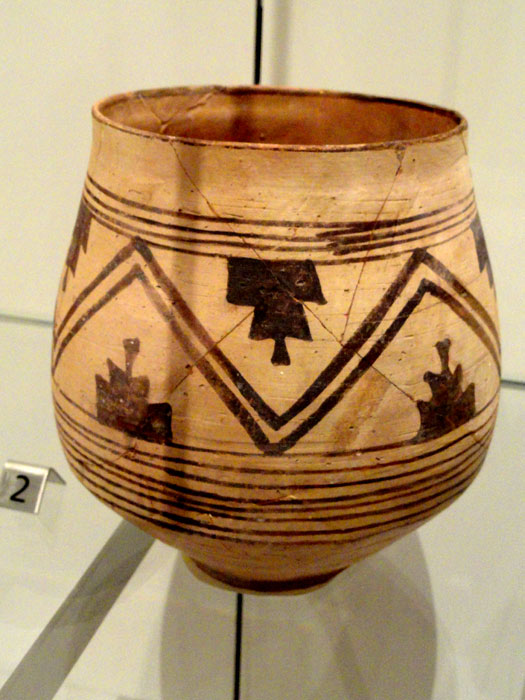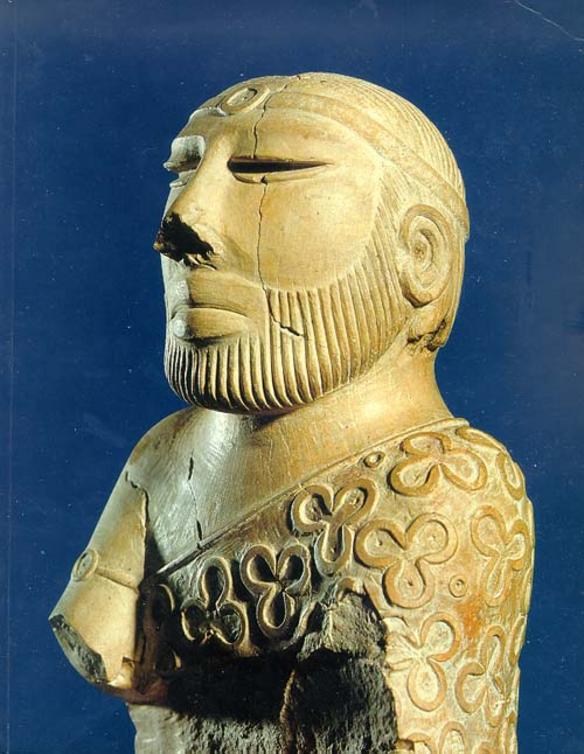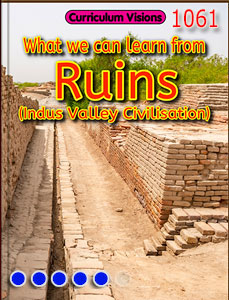Indus Valley Civilisation
.jpg)
(Source: Wikipedia).

Indus Valley pot (Source: Wikipedia).

Priest-king statue (Source: Wikipedia).
The River Indus is one of the world's great rivers, flowing from the Himalayas to the Indian Ocean, through what is now modern Pakistan. A civilisation grew up around the Indus River, but we have never known what they called themselves, so we call them the Indus Valley People.
The Indus Valley People lived about the same time as the early ancient Egyptians. Strikingly, much of the landscape in which the Indus valley people lived was similar to the land of the Egyptians – a river flowing through near desert land.
People formed civilisations all over the word about eight to ten thousand years ago. That means that they came together in a society with rules, and they developed writing, often to set out the rules. They also had sculptors and artists as well as farmers and labourers. They were usually ruled by a king. In these early civilisations, the king had to be strong or nearby peoples would raid his kingdom. So many things about these ancient civilisations concern war and weapons. But at the same time, a lot involves farming and settled life, and ways of irrigating the land, especially in desert-like places such as the Middle East and Pakistan.
The Indus Valley people built in mud brick - adobe - and this has to be repaired each year or it will be washed away in summer rains. So, when the civilisation collapsed, there was no one to mend the buildings and they crumbled away. That is one reason why there is so little left of this ancient civilisation.
Much of what we know comes from statues, bowls and other things that were buried, and so protected, in the rubble. We can tell that the clothes and hair styles of the Indus people were very similar to those of the Sumerians in the Fertile Crescent. The men had a trimmed beard and shaven upper lip. The men's hair was rolled into a bun and held at the back with a pin. Men wore a light robe and left the right shoulder bare. The women wore necklaces and an ornamental belt around their waist. The women also had large headdresses and wore skirts and robes.
It is likely that the Indus Valley civilisation developed as a result of other civilisations such as the Sumerians in nearby Iraq. The Indus valley people looked at these civilisations and copied what they did.
The earliest evidence of settled lifestyle in the Indus Valley is dated from around nine thousand years ago. The early farmers cultivated wheat, and domesticated a variety of animals, including cattle. They began using pottery around seven thousand years ago.
The first people began in the foothills of the Himalayas because there was more rain and it was, just in Sumeria, easier to grow cereals there. But from this base they spread out down along the banks of the Indus, and by six thousand years ago, they were living in what is now the Sindh province of Pakistan.
Timeline (all times are very approximate)
6000 BC Oldest Village in the Indus Valley
5000 BC Mud brick houses (permanent structures) are built
4000 BC People begin to farm in the Indus Valley
3400 BC Writing begins in Mesopotamia, Indus Valley, Egypt and China
3200 BC Settlements begin to spread across the Indus Valley
3000 BC People begin to use irrigation for farming in the Indus Valley
2600 BC Indus Valley civilisation develops and people begin to build cities
2570 BC Construction of the great pyramids in Egypt begins
2500 BC Construction of Stonehenge begins in Britain
2500 BC Cities of Harappa and Mohenjo-daro built in Indus Valley
2500-1900 BC Height of Indus Valley civilisation
1900-approx. 1000 BC Decline of Indus Valley civilisation
1800 BC third Ur dynasty in Mesopotamia
1500 BC Old Assyrian Kingdom in Mesopotamia
1326-1337 Tutankhamun rules Egypt



